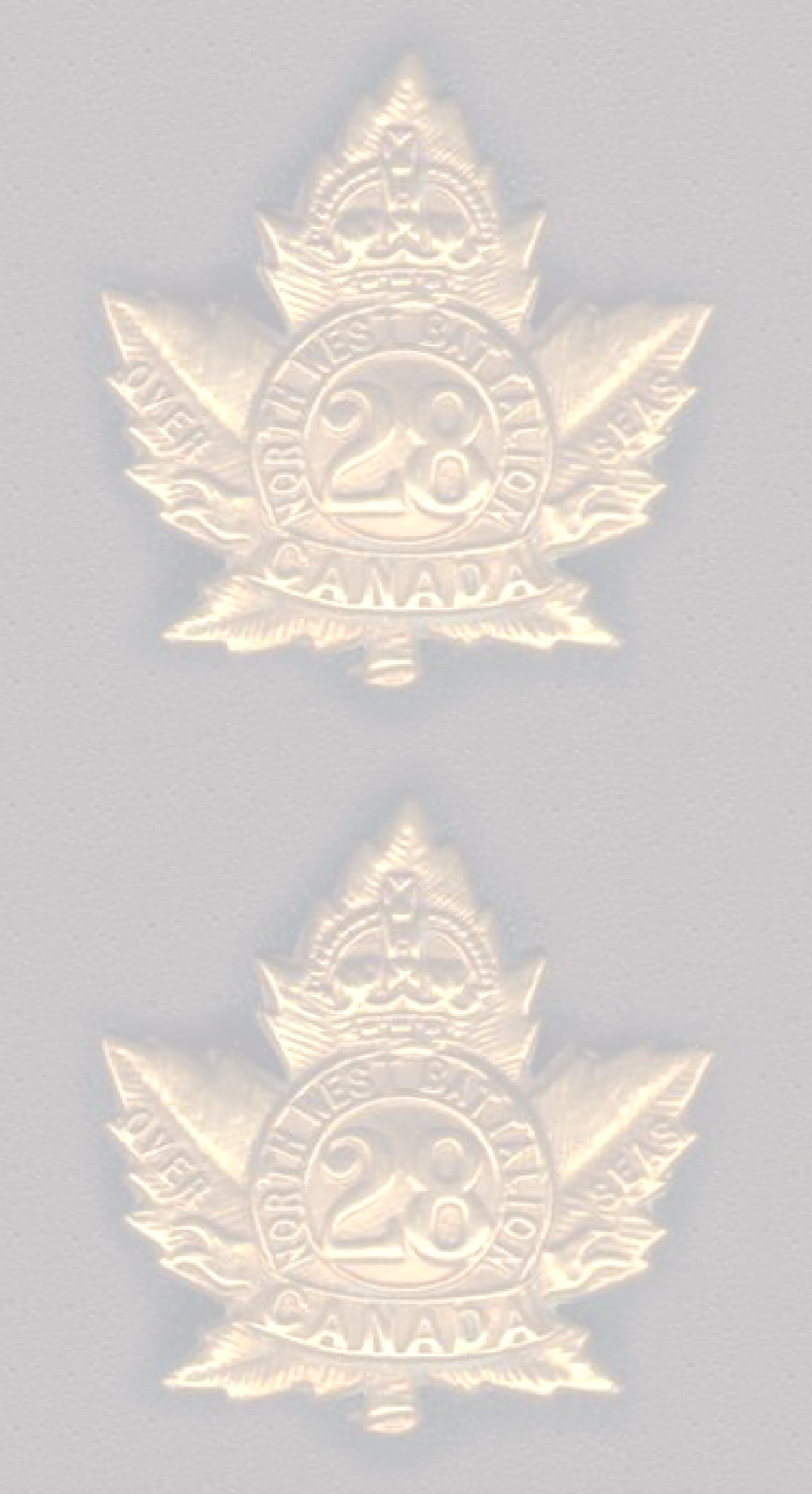
The War Diary of Lieutenant William L Hayes M C
1915—1919
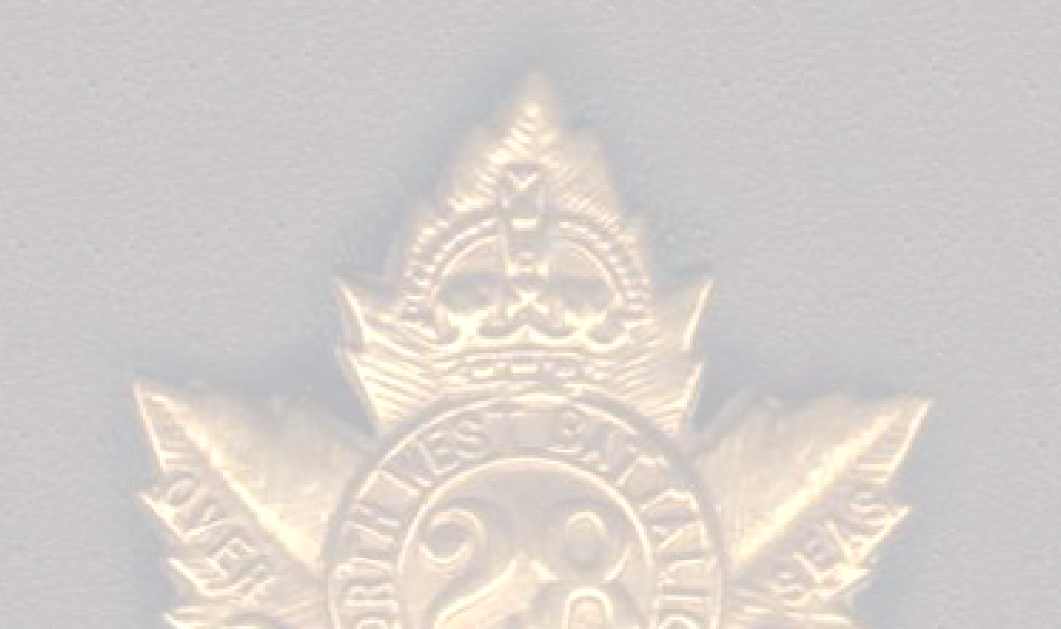
1 Dec 1917—24 May 1918
Officer Training
WLH
1 Dec 1917 Taken On Strength of Sask Regt’l Depot from 28th Bn
1 Dec 17 taken on strength at Sask Reg Depot, Bramshott
28 Dec 17 on command at 6th OTC (officer training course/college?) at CQMS Bexhill-
23 Mar 18 ceased command and SOS (struck off strength) on appointment to Commission in CEF, CQMS Bagshott
24 Mar 18 temp Lieutenant Sask Regt and posted to 15th Reserve Bn, on appointment to commission and returned to 28th Bn 14 May 1918. The WD records him as arriving as reinforcement on 8 July.
Apart from 10 days leave 15—25 Nov 1916, this training period was the first time WLH was away from the sound of the guns in over 2 years. Even his time in hospital in March 1916 was not far enough from the fighting. He was not unique.
Pay
All soldiers were paid on a daily rate. This rate was established in 1914 and did not change throughout. A Canadian private soldier earned $1.00 per day or about the same as an unskilled worker or farm labourer in Canada. $0.10 was added as a field allowance for time spent on the battlefield. Additional pay was made for extra training and for promotion. A Lieutenant was paid $2.00 per day with an additional $0.60 field allowance. WLH was earning $4.00 a day at the end of the war, probably due to additional training, responsibilities or as command pay. About the same as a Major.
Pay parades were held monthly. Each man had a pay book into which his pay was recorded. He also signed the paymaster’s sheet to acknowledge receipt of his pay. If he disagreed with the amount paid, he took it up with his commanding officer.
Part of the pay was sent, either to nominated relatives or banked.
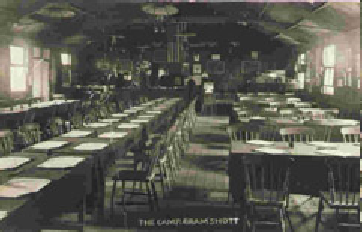
thebrigade.com
WLH was away from the trenches for almost 6 months. The Officer Training Course lasted 3 months. In the remaining time, he was with the Sask Regt’l Depot at Bramshott or the 15th Reserve Battalion. There was no point in sending an officer back to a Battalion which was already at full strength, so he probably spent the last months training other new recruits at Bramshott before they were sent as reinforcements into the field.
Training of Officers in wartime, was, of necessity, a short affair. Most of the men on these courses were seasoned soldiers, who had either shown exception aptitude or had already assumed responsibility, so the training in everyday life in the trenches was not a requirement. Instead, training focussed on the duties of the Officer and the knowledge required to function well at that level.
In a note book (probably not complete) kept by WLH, the following topics were addressed: Duties of officers under arms, ‘Get to know the NCOs and their seniority, enforce discipline, don’t give junior NCOs too much responsibility.’ ‘On proceeding to the Trenches, see that every man is fit to go in, inspect boots, SB Resp, rifles, amm, iron rations etc. He must know location of Batt and Coy HQ, reserve SAA and Bomb stores, listening posts, snipers posts, good positions for L/G. TMBs, artillery, FOO, advanced D.S. and nearest telephone, should know as much as possible about the Companies on each flank, and that all NCO and runners know about locations. Find out condition of wire if any gaps, protect them until repaired and upkeep of parapet and fire step, see that it is possible to fire at foot of own wire. See that all regulation with regard to sanitation are carried out. Foul ground should be marked. Get men interested in schemes for inflicting casualties on enemy. See that men know what to do in case of Gas Attack, Bombardment, Mine, Raid etc. ‘
Musketry & fire orders, ‘types of fire, indication of aiming mark, fire orders .. divided into .. Concentrated and Distributed. Concentrated: Is all the fire at the disposal of the Commander being directed onto one point in the enemies lines. Distributed: is divided into two ie maximum distribution all the fire at the disposal of the Commander being directed along the enemies lines within certain limits. Partial Distribution.. Is all the fire at disposal of Commander being directed onto a series of points in enemies lines within certain limits…’ Effective fire zones—range, depth, lateral
Judging distance and methods of training: flat country, visual angles, bracketing, lateral distances. Target recognition.
Maps and map reading, ‘A country is divided up into districts, these districts are divided into rectangles which are lettered commencing in the North West rectangle and working West to East in rows, South.
‘A district is cut up into sheets of convenient size to carry around. According to scale, in this case when giving a map location, district and sheet should be shown.’ ‘The numbered squares are sub divided into four squares 500 yards each way marked with smaller letters (a,b,c,d)…’ Subsequent subdivisions give rise to the map references in the WD. Eg: A.9.d.4.4
Patrols, kinds of patrols: ‘Reconnaissance, a strategical patrol to gain touch with the enemy. Tactical, standing patrols for protection, Visiting rounds which is rarely used.’ ‘Object to obtain full and accurate information of enemy position, strength, movements and resources of the country.’ ‘Signs, watch for, rubbish, cigarette ends, matches etc will often show when men have halted, ...Tracks, mud beaten down by Infantry, ruts transport or Artillery...smoke over an enemy camp… may mean they are cooking preparatory to moving. What a good patrol leader should know…Duties of Flank Guards, Rear Guards, Advance Guards, Main Guards’ ‘Outposts… to reconnoitre and resist.’ Composition, selection, duties and distribution of all of these as well as picquets, sentries and reconnoitring patrols.
Rations and system of supply. Army rations: fresh or preserved meat, jam, condensed milk, matches (3 boxes every two weeks), rice or bread, vegetables, pickles (if available) butter (2 oz weekly at front). Iron rations 1 lb biscuits, 1 lb preserved meat, 5/8 oz tea, 2 oz sugar. ‘Quartermaster receives daily ration state through C.Q.M.S. also Battalion ration state from Orderly Room from this he compiles Battalion ration Indent which goes to Divisional Train, thence to Supply Column who demand rations required from Base Supply Officer.
‘Owing to rations with the Supply Column being 3 days behind the Battalion, Indent handed into Train Tuesday will be for Saturday’s rations…’ Notes on how delivery made from Base by train to railhead, then by motor lorry to refilling point and then divisional horse transport to Battalion, then by horse to Battalion cookers thence to companies in front line.
Military Law, Arrests (open or close), detention, ‘A drunk should be confined to a room separate from other prisoners if possible. He should be visited every two hours by the NCO guard and an escort. When confined he should be searched and his boots removed (except in severe weather).’ Also charges, crimes, fines, Field General Courts Martial procedures, sentencing.
Dancing and Deportment, the Canadian Government needed its officers to present well in military and civilian situations.
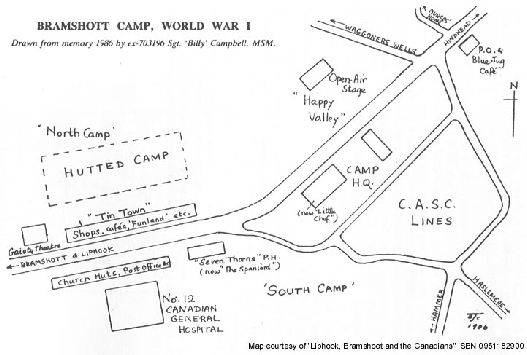
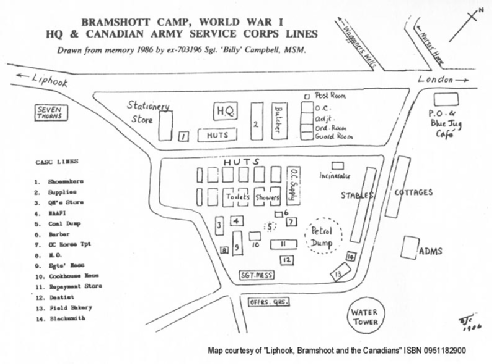
Meanwhile back in France:
December 1917 the Battalion continued in the front lines at the Chaudiere Section, Vimy, then St Hilaire for rest and specialist training.
12.12.1917 Canadian General Election (women officers were allowed to vote in federal elections for the fist time)
January 1918 rest at St Hilaire, then return to Cellar Camp, Neuville St Vaast, Vimy on 21 Jan. On 29 Jan moved to front lines in Avion Sector, then to reserve at La Haie from 21 February
March 1918 Battalion at Carency until 6 March, then to front lines at Lens Sector, return to La Haie and Houdain on 11 March
23 March all leave and courses cancelled and Battalion moved to near Arras
April/May/June Battle of Arras
12 May 1918 Lieut J B Bridge arrived in France as reinforcement
Early in the war it was deliberately decided that non-
Bramshott was a temporary Canadian army camp set up on Bramshott Common, Hampshire England, one of three in the Aldershot Command area.
Bexhill-
The Saskatchewan Regimental Depot (SRD) was formed 1 October 1917 to provide reinforcements for the 5th, 28th, and 46th Battalions and 1st Canadian Mounted Rifles through the 15th Canadian Reserve Battalion. [While in training, men remained attached to the SRD.] Commanded by Lieutenant-
The Canadian Reserve Battalions were established to hold men [once trained] as reinforcements and replacements for CEF units serving on the Western Front. The bulk of the battalions raised for the CEF went into these Battalions based in France and Great Britain. The strength of the Reserve Battalions was set at 2,000 all ranks and individual unit identities were preserved. A total of 23 Reserve Battalions were established within the Canadian Corps.
The 15th Reserve Battalion was organized at East Sandling on 4 January 1917 under the command of Lieutenant Colonel Anson Dulmage to reinforce the 28th Bn (and others). It moved to Bramshott on 23 February 1917 and to Ripon on 21 January 1919 and disbanded in England on 14 June 1919.